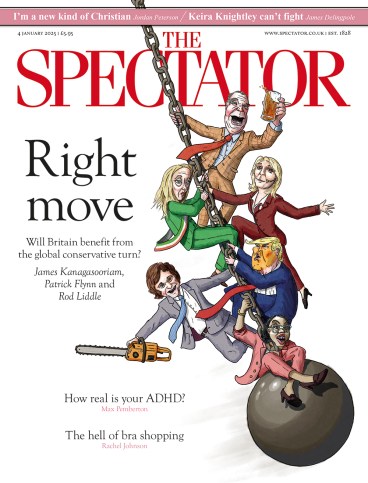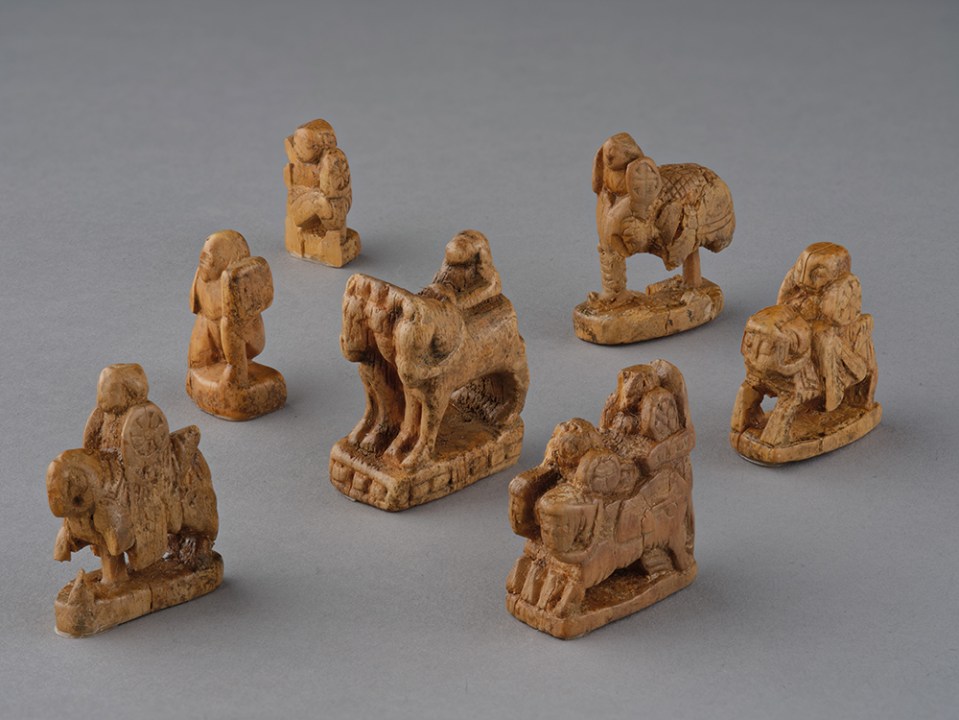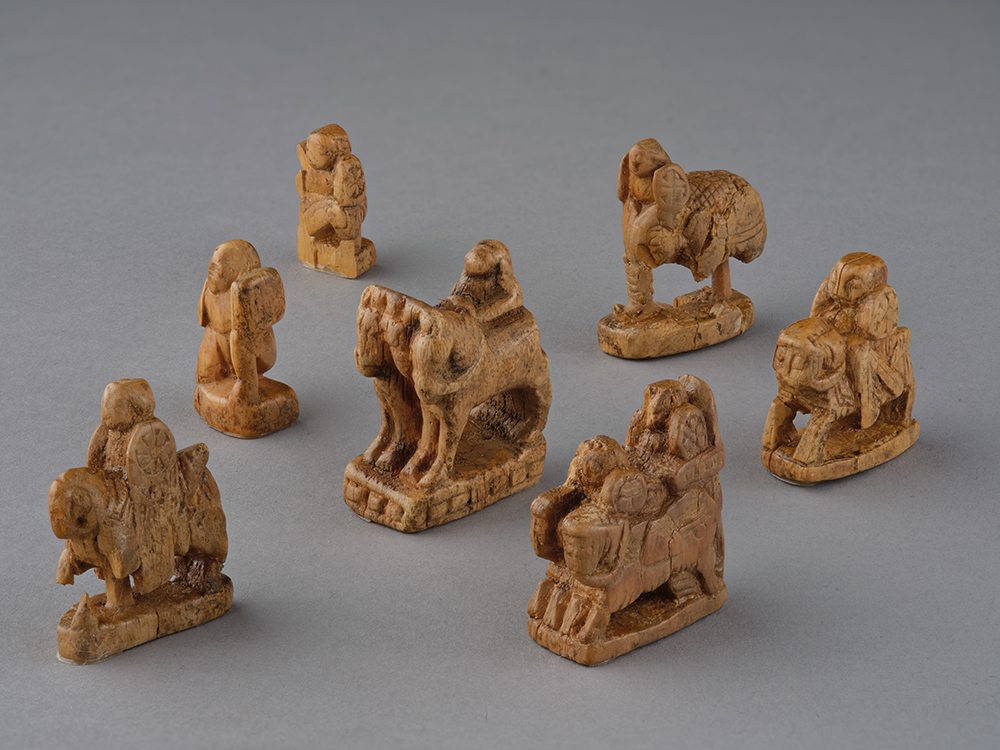
Towards the end of the British Museum’s Silk Roads show, there is a selection of treasures found in England. Among them is a copper flagon made in Syria and buried in Essex in the late 500s. It is believed that the flagon belonged to an English mercenary who went to fight for the Byzantines against the Sassanians in the 570s. The flagon’s looping handle would have held it tight to a saddle, so perhaps it came to England attached to the warrior’s horse as he rode home from his adventures in the East.
There are many spectacular objects in this exhibition. Very many
If objects are to inspire more than awe in us, we also need a handle. We need a detail or scrap of a story, something that will allow us to animate the object in the way that the Essex mercenary’s flagon allows us to imagine his journey back from the Middle East. Wrapped around the flagon is a bracelet with an image of St Sergius, the Syrian Christian martyr venerated as a protector of soldiers. Perhaps the Essex mercenary went to Resafa in Syria, between Palmyra and the Euphrates, and purchased the bracelet at the saint’s basilica. And with that possibility, my mind begins to wander across the many Syrian roads I have travelled and I am lost in dreams, in the same way that many of us dream when we hear those two words, Silk Roads.
This dreamy association is something the British Museum exploits with its exhibition poster of a camel train on a sand dune. The image conjures up the vast distances, desert and mountain, that had to be crossed so that goods, knowledge and beliefs could moved between East and West. It reminds us of travellers such as Marco Polo and, a little more recently, of Aurel Stein.
One of the things the exhibition does well is to meet our expectations as well as, at the same time, to confound them. The trade routes that comprise the Silk Roads and which brought not just silk but much else from China into the Mediterranean world crossed not only land, but also sea. The caravans that trekked slowly across Central Asia had only limited capacity, but ships could move vast quantities of cargo. The extent of it was brought home in 1998 when a wreck was found off the coast of Sumatra with some 60,000 pieces of Tang ceramics. The boat has since been dated to the 800s and is believed to have been sailing between Guangzhou and Basra, which suggests that there was a significant market for Tang China goods in the Abbasid Caliphate.
It wasn’t just ceramics that went down with that ship: one of the most spectacular objects in the exhibition is an octagonal gold cup decorated with musicians and dancers. But there are many spectacular objects in this exhibition. Very many. In no particular order, I remember a seated gilded Buddha from the 600s, which marks the introduction of Buddhism into Japan and another, much smaller one from the same period, found in Sweden. A funerary banner of a Uighur noble. A felt shoe with leather trimming that belonged to a guard at a hill fort in the Taklamakan desert. A 16th-century copy of a 12th-century map of the world. The oldest known chess pieces, made of India ivory in the 700s and found in Samarkand. Painted panels with elephants from a Sogdian palace. An exquisite gold necklace decorated with pearls, sapphires and emeralds from the 500s, found in Asyut in middle Egypt. The Geniza documents found walled up in a Cairo synagogue. A gold dinar minted in England in the 700s with the name Offa Rex, but also with an Arabic inscription around its edge: ‘There is no God but Allah.’ These and many other treasures will keep you engaged for hours – and you will need hours because the panels are small and the crowds are large. But that is not the main problem with this show.
The introductory panel states that ‘this is not the story of one road, but of many routes… countless journeys of contact and exchange across continents’. They should also have added ‘across time’. It is a grand ambition, but not one that can be fulfilled in a single museum show. The scope is too broad, the focus too wide (unlike the British Library’s companion exhibition, A Silk Road Oasis, which looks at life in ancient Dunhuang). Religion, commerce, transport, technology all put in the mix. So when we look at Offa’s gold dinar, or the Swedish Buddha, we are seeing the influence of far away, but I am not convinced that means that Britain or Sweden were part of the Silk Roads. What it does tell us is that during the centuries on which the exhibition focuses, ad 500-1000, a period commonly known as the Dark Ages, much of our world was already interconnected and also that, as a species, we thrive when we have free movement.








Comments